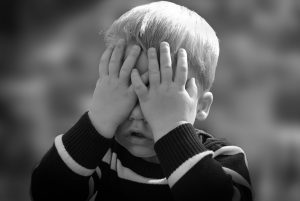 Statistics say that about 20%, or 1 in every 8 children in the United States will suffer from an anxiety disorder at some point in their youth. Yet, even with this high prevalence, anxiety disorders in children and adolescents are often overlooked or misunderstood by well-meaning adults.
Statistics say that about 20%, or 1 in every 8 children in the United States will suffer from an anxiety disorder at some point in their youth. Yet, even with this high prevalence, anxiety disorders in children and adolescents are often overlooked or misunderstood by well-meaning adults.
Before we get into why that is, let’s first, differentiate between “normal” anxiety, and an anxiety disorder. “Normal” anxiety consists of feelings of worry or nervousness that are appropriate to a given situation. For example, if a 3-foot spider shows up on your bed, screaming, hiding, and/or running outside into the night would all be appropriate responses. An anxiety disorder, on the other hand, occurs when a person’s everyday life is impaired because of the symptoms of anxiety. So, if we take the spider example, someone who refuses to sleep in that bed, or any bed, ever again, after seeing this spider, would probably be diagnosed with an anxiety disorder, like Post Traumatic Stress Disorder or Specific Phobia.
When we look at adults, we usually think that anxiety consists of symptoms like: fear, nervousness, worry, avoidance, and maybe obsessive/compulsive traits like persistent thoughts or rituals that the person needs to perform in order to feel safe. In children and adolescents, however, anxiety can take those forms, plus, any of the following:
- Clinginess
- Separation Anxiety
- Impulsiveness
- Irritability
- Distractedness
- Restlessness
- Jitters
- Inability To Sleep
- Sweaty Palms
- Increased Heart Rate
- Headaches
- Stomachaches
- Nausea
The wide array of presentations that anxiety can take is partly responsible for its sneakiness. It’s quite a chameleon, isn’t it? The other reason that this disorder sometimes goes underground is because kids and teenagers with anxiety aren’t prone to talking about their feelings, because, well, they are afraid to.
What Parents Can Do
First, know that you are not alone. As we said earlier, childhood anxiety disorders are quite common. Experts believe that the cause of these disorders is a combination of genes and environment, which we realize is quite vague. Just know that you did not intentionally give your child an anxiety disorder, even if you happen to have one yourself, and that there are things that you can do to help.
Talk to your child about what he or she is feeling. Let her know that she doesn’t have to hide or be ashamed of her feelings, and that you are there for her. Try to provide proper structure and a good routine for your child, as this will help with feelings of security, but also, teach flexibility and the importance of rolling with changes. Be consistent, and be present for your child when he asks questions. Teach healthy eating and the importance of movement. Try to incorporate breathing exercises, meditation, and yoga into your child’s life. (Click on the links for some fabulous examples!) These coping skills have proven extremely effective in managing anxiety for kids, adolescents, and adults, of all ages!
Dealing with childhood anxiety can become overwhelming, but it doesn’t have to! If you feel that you or your child could benefit from working with a professional, contact us. We are here to help!
